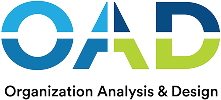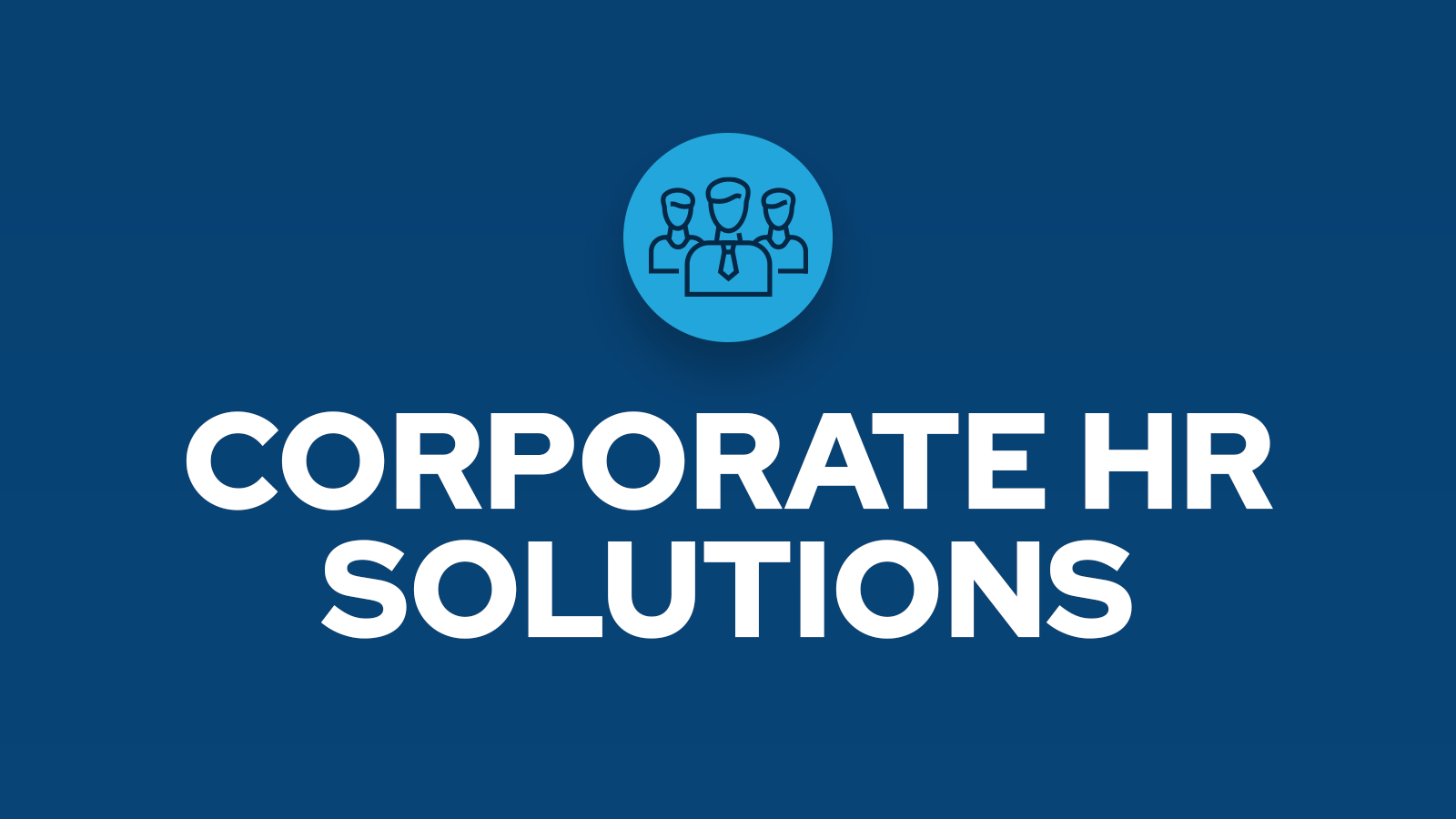In today’s fast-changing business landscape, HR is no longer just about payroll and paperwork — it’s the driving force behind sustainable growth. The right corp HR solutions help companies streamline operations, stay compliant with complex regulations, and attract top talent in a competitive market. For organizations aiming to scale without sacrificing culture or compliance, modern HR solutions are no longer optional — they’re essential.
Table of Contents
- What Are Corp HR Solutions?
- Why They Matter for Growing Companies
- How Corp HR Solutions Streamline Operations
- Leveraging HR Technology and Analytics
- Best Practices for Attracting and Retaining Talent
- Ensuring Regulatory Compliance in HR Operations
- Prioritizing Employee Safety and Wellbeing
- Choosing the Right Partner
- The Future of HR: Trends and Innovations
- Conclusion: HR as a Strategic Business Partner
In today’s fast-changing business landscape, HR is no longer just about payroll and paperwork — it’s the driving force behind sustainable growth. Corp HR solutions offer a broad range of services, including HR support, compliance, and consulting, that help organizations streamline operations, ensure legal compliance, and advance their mission. The right corp HR solutions help companies streamline operations, stay compliant with complex regulations, and attract top talent in a competitive market. For organizations aiming to scale without sacrificing culture or compliance, modern HR solutions are no longer optional — they’re essential.
What Are Corp HR Solutions?
Corp HR solutions refer to comprehensive human resource systems designed for mid-sized and large organizations. Unlike small-business tools that focus only on payroll or basic administration, corporate HR platforms integrate everything from recruitment and benefits management to compliance and workforce analytics. These solutions provide a full spectrum of HR service, covering everything from regulatory compliance to talent management.
These solutions go beyond handling daily tasks — they give HR professionals the expertise, structure, and insight needed to align people strategy with business goals. A deep understanding of each organization’s unique challenges and needs is essential for delivering tailored corp HR solutions that truly make an impact. Corp HR solutions also help organizations develop and implement tailored plans to address workforce needs and compliance requirements. When managed effectively, corp HR solutions don’t just support operations; they create a competitive edge by ensuring the right people are in the right roles.
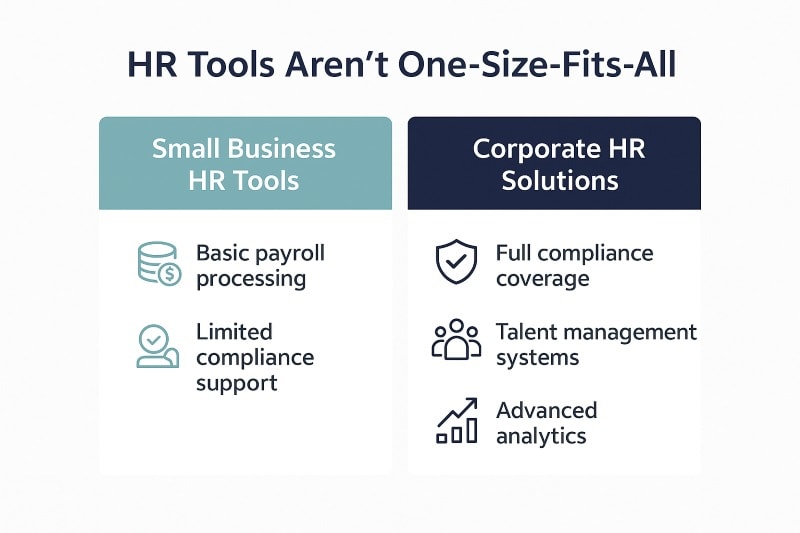
Why They Matter for Growing Companies
For organizations with 50 or more employees, HR is more than an administrative function — it’s the driving force behind long-term growth. As companies scale, HR responsibilities expand from hiring and payroll to include compliance with complex employment laws, federal regulations, and local requirements. Effective HR leadership is essential for navigating these complexities and guiding the organization through growth. Without the right systems, even well-intentioned HR teams can become bottlenecks instead of business enablers.
Corporate HR solutions help leaders focus on the big picture by ensuring operational consistency and protecting against costly risks. Robust HR solutions can also save companies significant time and money by preventing compliance issues and costly litigation. They also elevate HR’s role from reactive administration to proactive strategy — shaping company culture, supporting employee engagement, and enabling sustainable performance. As Jeff Bezos has often emphasized, “the key to success is hiring and retaining the best people.” Corp HR solutions make that philosophy actionable at scale.
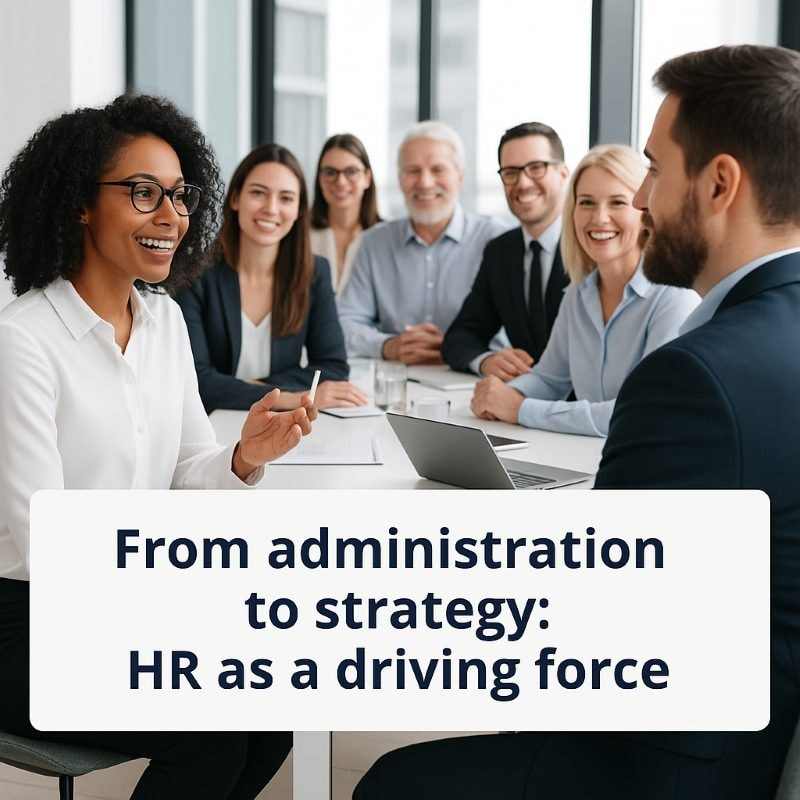
How Corp HR Solutions Streamline Operations
As organizations grow, complexity multiplies. Payroll, benefits, and compliance all demand precision — and mistakes can cost both time and money. Corp HR solutions address these challenges by automating repetitive tasks, reducing administrative overhead, and freeing HR professionals to focus on higher-value work.
Automation is only part of the story. The best HR platforms integrate compliance monitoring, ensuring adherence to federal and local laws while minimizing the risk of penalties. These platforms also help organizations plan for regulatory changes and future workforce needs, supporting strategic initiatives. Additionally, they centralize data, making it easier for leaders to access insights that improve workforce planning and resource allocation. HR solutions further help leaders and teams better understand complex compliance requirements, reducing the risk of errors.
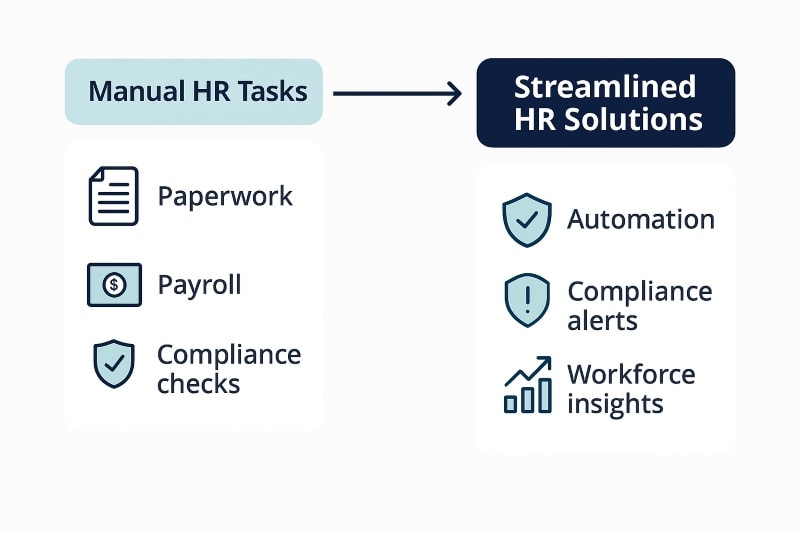
The result is a more productive, streamlined organization where HR isn’t chasing paperwork but driving business outcomes. Companies that embrace these solutions consistently report lower risk exposure, smoother hiring cycles, and better long-term cost control.
Leveraging HR Technology and Analytics
Today’s most effective corp HR solutions combine human expertise with advanced technology. By integrating payroll automation, compliance monitoring, and analytics dashboards, organizations can reduce costs, streamline HR responsibilities, and free their teams from routine administrative work. The result is more time and resources directed toward strategy — not paperwork.
An experienced HR professional plays a critical role in guiding the adoption of these tools. With the right expertise, companies can navigate complex employment laws, government regulations, and local requirements confidently, minimizing risk while ensuring compliance at every level.
But technology’s true value lies in its ability to transform raw data into clear, actionable insights. Real-time analytics reveal workforce trends, engagement levels, and performance metrics, giving leaders the knowledge they need to recruit quality employees, enhance retention, and align decisions with the company’s mission and long-term vision.
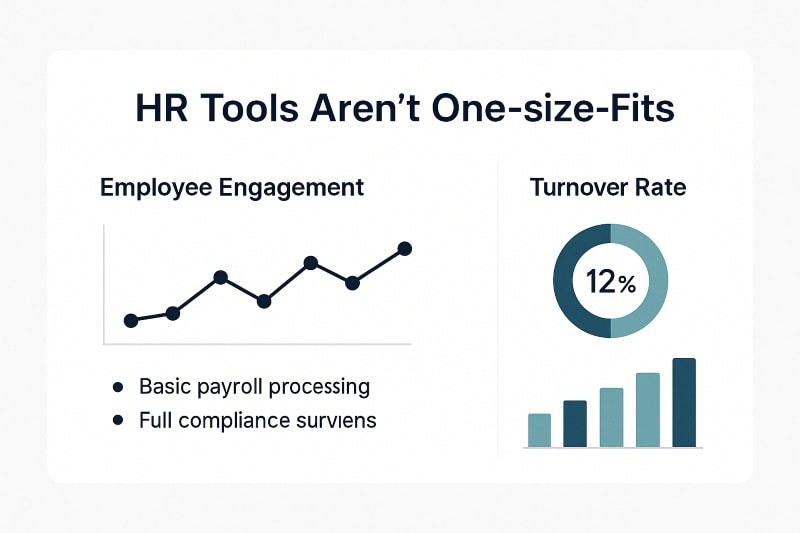
By pairing technology with subject matter experts in areas like payroll management and benefits administration, companies gain access to industry-leading practices that strengthen culture and improve employee satisfaction. In this way, HR technology doesn’t replace expertise — it amplifies it, helping businesses establish themselves as employers of choice in their industry.
Best Practices for Attracting and Retaining Talent
In a competitive hiring market, attracting quality employees isn’t just about compensation — it’s about creating an environment where people want to stay and grow. Communicating and reinforcing organizational values is key to employee engagement and retention, ensuring staff feel aligned with company culture and goals. Leading organizations use HR best practices such as structured recruiting, data-driven hiring, and personalized onboarding to build stronger teams from day one.
Retention is equally critical. Offering meaningful employee benefits — from health coverage to professional development opportunities — gives companies a competitive edge in industries where talent is scarce. Investing in employee knowledge and skill-building supports long-term retention and organizational growth. Howard Schultz, former CEO of Starbucks, famously argued that investing in employee benefits wasn’t a cost, but a growth strategy: “If you treat your people well, they’ll treat your customers well.”
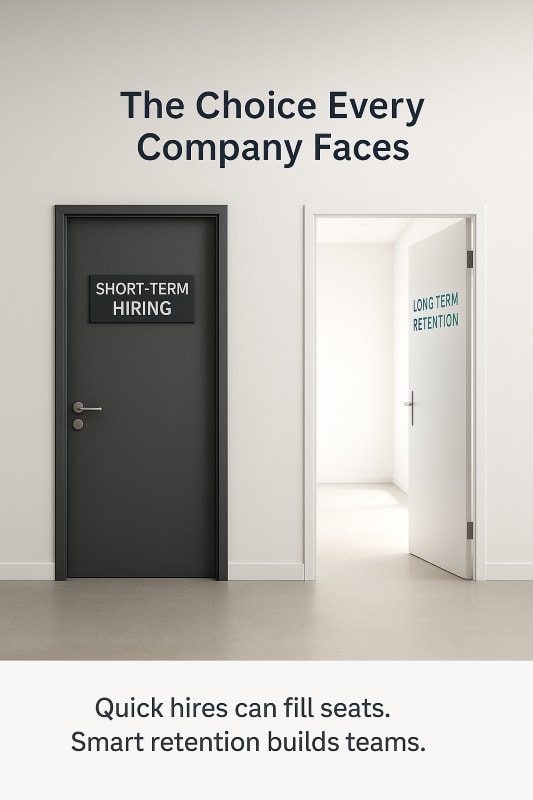
By embedding practices that foster culture, innovation, and loyalty, corp HR solutions help organizations transform recruiting into a long-term retention strategy. Instead of chasing talent, companies become magnets for it.
Communication Strategies for a Connected Workforce
Effective communication is the driving force behind a cohesive and high-performing organization. Modern HR solutions are designed to foster open communication, ensuring that employees remain informed, engaged, and aligned with the company’s mission and vision. By leveraging a variety of communication tools and strategies—such as regular updates, feedback channels, and recognition programs—organizations can build a culture of transparency, collaboration, and innovation.
A connected workforce is better equipped to address challenges, adapt to change, and seize new opportunities. Clear communication reduces the costs associated with misunderstandings and errors, while also enhancing productivity and employee satisfaction. HR solutions that prioritize communication help organizations foster excellence, drive business growth, and maintain a competitive edge in their industry.
By making communication a central part of HR strategy, companies can create an environment where employees feel valued, informed, and empowered to contribute to the organization’s success.
Ensuring Regulatory Compliance in HR Operations
Regulatory compliance is a top priority for any organization, and effective HR solutions are essential for meeting this challenge head-on. With ever-changing employment laws, local laws, and federal regulations, companies must stay vigilant to avoid costly penalties and protect their reputation. HR solutions provide the structure and tools needed to ensure accurate payroll reports, maintain up-to-date records, and implement HR best practices that foster a culture of compliance.
By partnering with subject matter experts, organizations gain access to specialized resources and guidance that help them navigate complex regulatory landscapes. These experts keep businesses informed about changes in regulations and industry standards, ensuring that HR practices remain current and effective. A strong compliance framework not only reduces risk but also signals to quality employees that the organization values ethical conduct and responsible management.
Incorporating compliance into everyday HR operations builds trust, supports organizational culture, and positions the business as a leader in its industry—making compliance not just a requirement, but a strategic advantage.
HR Needs Assessment: Laying the Foundation for Effective Solutions
A successful HR strategy begins with a comprehensive HR needs assessment. This foundational step allows organizations to pinpoint their unique challenges and requirements, ensuring that the HR solutions they implement are truly effective. By engaging an experienced HR professional, companies can systematically evaluate their current HR responsibilities, employee benefits offerings, and compliance with employment laws and government regulations.
This assessment process is more than a checklist—it’s an opportunity to align HR practices with the organization’s broader business goals and industry standards. By identifying gaps and areas for improvement, businesses can create a tailored plan that addresses their specific HR needs. This plan becomes the blueprint for implementing corporate HR solutions that not only solve immediate challenges but also support long-term growth and competitiveness.
Ultimately, a thorough HR needs assessment empowers organizations to proactively address compliance, streamline HR operations, and ensure that their HR solutions are designed to meet the evolving demands of their industry.
Prioritizing Employee Safety and Wellbeing
Creating a safe and supportive work environment is essential for any organization aiming to attract and retain top talent. HR solutions that prioritize employee safety and wellbeing go beyond compliance—they actively contribute to a more productive and engaged workforce. By offering comprehensive employee benefits, access to wellness programs, and ongoing development opportunities, organizations demonstrate their commitment to their employees’ health and satisfaction.
Implementing HR best practices in safety and wellbeing can significantly reduce costs related to absenteeism, turnover, and workplace injuries. These investments not only improve morale but also give companies a competitive edge in the marketplace. When employees feel valued and supported, they are more likely to be productive, loyal, and motivated to contribute to the organization’s success.
Focusing on employee wellbeing is not just the right thing to do—it’s a smart business strategy that drives long-term growth and helps organizations create a culture where everyone can thrive.
Choosing the Right Partner
Not all HR solutions are created equal. The best choice depends on your organization’s mission, vision, and culture — and whether a partner can align with those priorities. The best HR partners work collaboratively with organizations to achieve shared goals, offering support and strategic alignment that drive mission-driven success. A system that looks affordable upfront but lacks compliance support or development tools often creates hidden costs in the long run.
The right partner provides more than software. They bring HR expertise, guidance, and proven practices to help companies manage complexity while fostering excellence. OAD, for example, combines decades of behavioral science with practical business insight, giving employers a way to match candidates with roles more accurately and reduce costly turnover.
When evaluating options, leaders should look beyond features and ask: Will this solution help us attract talent, stay compliant, and build the culture we want? Conducting a thorough search for the right HR solution ensures alignment with organizational needs and long-term success. The answer determines whether HR becomes a true business partner or remains a back-office function.

The Future of HR: Trends and Innovations
The HR landscape is rapidly evolving, with new trends and innovations reshaping how organizations manage their human resources. Advanced HR solutions now incorporate technologies like artificial intelligence, data analytics, and cloud-based platforms, enabling businesses to streamline operations, improve efficiency, and reduce costs. These tools provide organizations with real-time insights, helping them make data-driven decisions and stay agile in a competitive market.
In addition to technological advancements, there is a growing emphasis on diversity, equity, and inclusion, as well as the overall employee experience. Forward-thinking organizations are leveraging HR solutions to create inclusive cultures, support employee development, and enhance wellbeing—factors that are increasingly important for attracting and retaining top talent.
To stay ahead of these trends, organizations should partner with subject matter experts who can provide the latest resources, guidance, and support. By embracing innovation and best practices, companies can create a competitive edge, streamline HR processes, and position themselves for long-term success in an ever-changing business environment.
Conclusion: HR as a Strategic Business Partner
For companies scaling beyond 50 employees, HR is no longer a support function — it’s a strategic driver of business success. The right corp HR solutions ensure compliance, streamline operations, and create a workplace where top talent thrives. When HR aligns with leadership’s vision, it becomes a growth engine rather than a cost center.
Forward-thinking CEOs like Warren Buffett often emphasize that people are a company’s most important asset. The science agrees: organizations that prioritize HR best practices report stronger retention, higher productivity, and measurable financial gains. Investing in employee education and development is a key driver of these positive outcomes, fostering learning and capacity building that contribute to organizational success.
The question isn’t whether you need corp HR solutions — it’s whether you’re ready to implement them strategically. With OAD’s behavioral science and proven frameworks, companies can hire smarter, reduce turnover, and foster cultures that sustain long-term growth.
Test OAD for free today and experience how data-driven HR transforms from administration to advantage.
